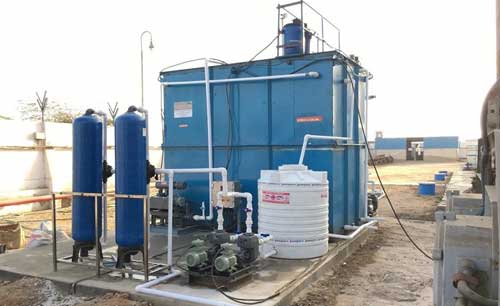The process of treating wastewater is known as industrial wastewater treatment, and it is an essential process to prevent contamination. After it is treated, industrial wastewater is usually reused, or it can be released into surface or sanitary sewer systems. There are several types of Effluent Treatment Plants (ETPs) and how they operate. Read on to learn more about the different types. Here's a closer look.
Wastewater is loaded with microbial pathogens, which are dangerous to human health. Bacteria and viruses can harm the environment, and protozoa are complex metabolic organisms that can survive in sewage. The wastewater treatment process involves chemical, physical, and biological treatments to remove these harmful organisms. To remove these substances, an Effluent Treatment Plant treats wastewater.
In the first place, wastewater has physical and chemical characteristics. These properties can indicate how polluted the water is. The physical indicators include colour, odour, and temperature. Stool, grease, and oil are a few examples of the pollutants in wastewater. The inorganic and organic constituents of wastewater include molecules, salts, and ions. The biological oxygen demand (BOD) measurement reveals the presence of living organisms in wastewater, while the chemical oxygen demand measures the amount of non-biodegradable organics in the effluent.
An Effluent Treatment Plant has several steps that help clear wastewater. It removes pollutants from wastewater and improves its quality. A process called biofilm removal is a key part of the process. A series of chemicals and enzymes are used to destroy microbial pathogens, which are dangerous to humans during this process. The other three components of an ETP include the chemical oxygen demand, bacterial growth inhibition, and sedimentation.
What is an Effluent Treatment Plant?
.jpg)
An Effluent Treatment Plant can treat a variety of pollutants, from organic matter to heavy metals and suspended solids. An ETP works with both continuous and batch processes. Some of the chemical processes are physico-chemical, while others use polishing treatments. To learn more, contact Perfect Pollucon Services. Our expert operators and supervisors will keep your plant operating smoothly and help you maintain records.
-2.jpg)
An ETP is important for the environment because contaminated water is harmful to people. It is necessary to ensure the safety of our communities by implementing water pollution control measures. This plant also can clean and reduce toxic levels in the wastewater. It is a good investment for any business, and it is also beneficial for our local community. Once installed, an ETP plant can improve your community's water quality.
A wastewater treatment plant can remove these chemicals and microbial pathogens and remove the chemical waste, and it is an important component of the wastewater treatment process. A well-designed ETP can improve the water quality of the environment by removing pollutants and microbial pathogens, and it also improves the environment by reducing the demand for freshwater. The process is simple but requires expertise to ensure its proper operation.
The operation of an Effluent Treatment Plant is simple. The basic goal is to improve the water quality. Various units are used in the process. For example, a dewatering unit, a screening unit, and a filtering system. A primary clarifier slows the velocity of the water, and it is equipped with equipment for separating floating solids. A secondary clarifier has a sludge pump and aeration tanks.
The operating of an ETP Plant can be divided into three categories, primary, secondary, and tertiary. The primary treatment process involves the separation of solid and liquid matter. In the second stage, the sludge is dissolved in a liquid. A tertiary treatment process is the best for removing microbiological contaminants. The secondary and tertiary stages can be combined.
The ETP plant is an industrial wastewater treatment facility. It processes wastewater by removing chemical and biological pollutants. The operation of an ETP plant involves different chemical processes, including physico-chemical, ultrafiltration, and reverse osmosis. The final step is the polishing treatment. There are also membranes for removing oil and grease. A typical wastewater treatment plant will also treat the effluent and recycle the water.
A typical ETP is a complex process for separating solid materials from wastewater. It essentially treats water before it is released into the environment. Some types of ETPs are mainly designed to treat liquid wastes. A bioreactor is a biological device used to treat industrial wastewater, and it also filters solid materials in the wastewater. A bacterial reactor is a chemical treatment plant. The bacterial culture of a bacteria sludge helps reduce the number of bacteria in the effluent.







































Share Post